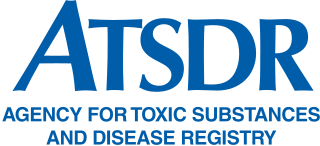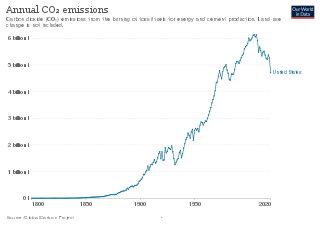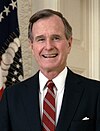Related Research Articles

The Environmental Protection Agency (EPA) is an independent executive agency of the United States federal government tasked with environmental protection matters. President Richard Nixon proposed the establishment of EPA on July 9, 1970; it began operation on December 2, 1970, after Nixon signed an executive order. The order establishing the EPA was ratified by committee hearings in the House and Senate. The agency is led by its administrator, who is appointed by the president and approved by the Senate. The current administrator is Michael S. Regan. The EPA is not a Cabinet department, but the administrator is normally given cabinet rank. The EPA has its headquarters in Washington, D.C., regional offices for each of the agency's ten regions, and 27 laboratories. The agency conducts environmental assessment, research, and education. It has the responsibility of maintaining and enforcing national standards under a variety of environmental laws, in consultation with state, tribal, and local governments. It delegates some permitting, monitoring, and enforcement responsibility to U.S. states and the federally recognized tribes. EPA enforcement powers include fines, sanctions, and other measures. The agency also works with industries and all levels of government in a wide variety of voluntary pollution prevention programs and energy conservation efforts. The agency's budgeted employee level in 2023 is 16,204.1 full-time equivalent (FTE). More than half of EPA's employees are engineers, scientists, and environmental protection specialists; other employees include legal, public affairs, financial, and information technologists. Many public health and environmental groups advocate for the agency and believe that it is creating a better world. Other critics believe that the agency commits government overreach by adding unnecessary regulations on business and property owners.

The United States Public Health Service is a collection of agencies of the Department of Health and Human Services concerned with public health, containing nine out of the department's twelve operating divisions. The Assistant Secretary for Health oversees the PHS. The Public Health Service Commissioned Corps (PHSCC) is the federal uniformed service of the PHS, and is one of the eight uniformed services of the United States.

The Agency for Toxic Substances and Disease Registry (ATSDR) is a federal public health agency within the United States Department of Health and Human Services. The agency focuses on minimizing human health risks associated with exposure to hazardous substances. It works closely with other federal, state, and local agencies; tribal governments; local communities; and healthcare providers. Its mission is to "Serve the public through responsive public health actions to promote healthy and safe environments and prevent harmful exposures." ATSDR was created as an advisory, nonregulatory agency by the Superfund legislation and was formally organized in 1985.

Superfund is a United States federal environmental remediation program established by the Comprehensive Environmental Response, Compensation, and Liability Act of 1980 (CERCLA). The program is administered by the Environmental Protection Agency (EPA). The program is designed to investigate and clean up sites contaminated with hazardous substances. Sites managed under this program are referred to as "Superfund" sites. There are 40,000 federal Superfund sites across the country, and approximately 1,300 of those sites have been listed on the National Priorities List (NPL). Sites on the NPL are considered the most highly contaminated and undergo longer-term remedial investigation and remedial action (cleanups).

The Resource Conservation and Recovery Act (RCRA), enacted in 1976, is the principal federal law in the United States governing the disposal of solid waste and hazardous waste.

The Toxic Substances Control Act (TSCA) is a United States law, passed by the 94th United States Congress in 1976 and administered by the United States Environmental Protection Agency (EPA), that regulates chemicals not regulated by other U.S. federal statutes, including chemicals already in commerce and the introduction of new chemicals. When the TSCA was put into place, all existing chemicals were considered to be safe for use and subsequently grandfathered in. Its three main objectives are to assess and regulate new commercial chemicals before they enter the market, to regulate chemicals already existing in 1976 that posed an "unreasonable risk of injury to health or the environment", as for example PCBs, lead, mercury and radon, and to regulate these chemicals' distribution and use.
An unfunded mandate is a statute or regulation that requires any entity to perform certain actions, with no money provided for fulfilling the requirements. This can be imposed on state or local government, as well as private individuals or organizations. The key distinction is that the statute or regulation is not accompanied by funding to fulfill the requirement

Environmental education (EE) refers to organized efforts to teach how natural environments function, and particularly, how human beings can manage behavior and ecosystems to live sustainably. It is a multi-disciplinary field integrating disciplines such as biology, chemistry, physics, ecology, earth science, atmospheric science, mathematics, and geography.

The Safe Drinking Water Act (SDWA) is the principal federal law in the United States intended to ensure safe drinking water for the public. Pursuant to the act, the Environmental Protection Agency (EPA) is required to set standards for drinking water quality and oversee all states, localities, and water suppliers that implement the standards.

The Air Pollution Control Act of 1955 was the first U.S. federal law to address the national environmental problem of air pollution. This was "an act to provide research and technical assistance relating to air pollution control". The act "left states principally in charge of prevention and control of air pollution at the source". The act declared that air pollution was a danger to public health and welfare, but preserved the "primary responsibilities and rights of the states and local government in controlling air pollution".

Marine Protection, Research and Sanctuaries Act of 1972 (MPRSA) or Ocean Dumping Act is one of several key environmental laws passed by the US Congress in 1972. The Act has two essential aims: to regulate intentional ocean disposal of materials, and to authorize any related research. While the MPRSA regulates the ocean dumping of waste and provides for a research program on ocean dumping, it also provides for the designation and regulation of marine sanctuaries. The act regulates the ocean dumping of all material beyond the territorial limit and prevents or strictly limits dumping material that "would adversely affect human health, welfare, or amenities, or the marine environment, ecological systems, or economic potentialities". The MPRSA authorized the Environmental Protection Agency (EPA) to regulate ocean dumping of materials including, but not limited to, industrial waste, sewage sludge, biological agents, radioactive agents, NBC, garbage, chemicals, and biological and laboratory, as well as other wastes, into the territorial waters of the United States through a permit program. The EPA can issue permits for dumping of materials other than dredge spoils if the agency determines, through a full public notice and process, that the discharge will not unreasonably degrade or endanger human health or welfare or the marine environment. The law also has provisions related to creating marine sanctuaries, conducting ocean disposal research and monitoring coastal water quality.

The Food Quality Protection Act (FQPA), or H.R.1627, was passed unanimously by Congress in 1996 and was signed into law by President Bill Clinton on August 3, 1996. The FQPA standardized the way the Environmental Protection Agency (EPA) would manage the use of pesticides and amended the Federal Insecticide, Fungicide, and Rodenticide Act and the Federal Food Drug and Cosmetic Act. It mandated a health-based standard for pesticides used in foods, provided special protections for babies and infants, streamlined the approval of safe pesticides, established incentives for the creation of safer pesticides, and required that pesticide registrations remain current.

Environmental issues in the United States include climate change, energy, species conservation, invasive species, deforestation, mining, nuclear accidents, pesticides, pollution, waste and over-population. Despite taking hundreds of measures, the rate of environmental issues is increasing rapidly instead of reducing. The United States is among the most significant emitters of greenhouse gasses in the world. In terms of both total and per capita emissions, it is among the largest contributors. The climate policy of the United States has big influence on the world.

The environmental policy of the United States is a federal governmental action to regulate activities that have an environmental impact in the United States. The goal of environmental policy is to protect the environment for future generations while interfering as little as possible with the efficiency of commerce or the liberty of the people and to limit inequity in who is burdened with environmental costs. As his first official act bringing in the 1970s, President Richard Nixon signed the U.S. National Environmental Policy Act (NEPA) into law on New Years Day, 1970. Also in the same year, America began celebrating Earth Day, which has been called "the big bang of U.S. environmental politics, launching the country on a sweeping social learning curve about ecological management never before experienced or attempted in any other nation." NEPA established a comprehensive US national environmental policy and created the requirement to prepare an environmental impact statement for “major federal actions significantly affecting the quality of the environment.” Author and consultant Charles H. Eccleston has called NEPA, the world's “environmental Magna Carta”.

The Clean Air Act (CAA) is the United States' primary federal air quality law, intended to reduce and control air pollution nationwide. Initially enacted in 1963 and amended many times since, it is one of the United States' first and most influential modern environmental laws.
To protect the environment from the adverse effects of pollution, many nations worldwide have enacted legislation to regulate various types of pollution as well as to mitigate the adverse effects of pollution. At the local level, regulation usually is supervised by environmental agencies or the broader public health system. Different jurisdictions often have different levels regulation and policy choices about pollution. Historically, polluters will lobby governments in less economically developed areas or countries to maintain lax regulation in order to protect industrialisation at the cost of human and environmental health.

The Office of Enforcement and Compliance Assurance (OECA) is the law enforcement arm of the United States Environmental Protection Agency (EPA). It is made up of attorneys, special agents, scientists and other employees.
The, United States Environmental Protection Agency (EPA) began regulating greenhouse gases (GHGs) under the Clean Air Act from mobile and stationary sources of air pollution for the first time on January 2, 2011. Standards for mobile sources have been established pursuant to Section 202 of the CAA, and GHGs from stationary sources are currently controlled under the authority of Part C of Title I of the Act. The basis for regulations was upheld in the United States Court of Appeals for the District of Columbia in June 2012.

Energy Tax Prevention Act, also known as H.R. 910, was a 2011 bill in the United States House of Representatives to prohibit the United States Environmental Protection Agency (EPA) from regulating greenhouse gases to address climate change. On April 7, 2011, the bill passed the House by a vote of 255 to 172. The bill died in January 2013 with the ending of the Congressional session.
Michigan v. Environmental Protection Agency, 576 U.S. 743 (2015), is a landmark United States Supreme Court case in which the Court analyzed whether the Environmental Protection Agency must consider costs when deciding to regulate, rather than later in the process of issuing the regulation.

